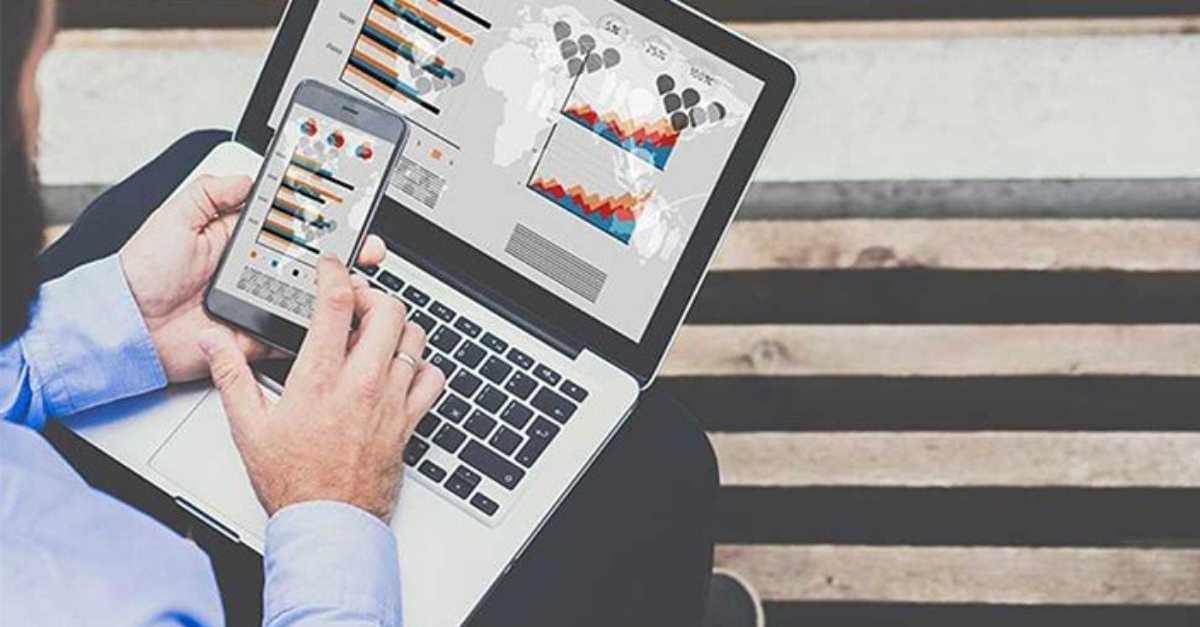
Essential Technology for the Hybrid Workplace or Campus
What’s most important for your organization in your hybrid workplace technology solutions? EMS customers weigh in on mobile access, self-scheduling ...
Solutions
Workplace Management Solutions
Real Estate Management Solutions
Maintenance Management Solutions
Energy Management Solutions
Engineering Document Management Solutions
Asset Management Solutions
Automate campus scheduling for classes, meetings, and exams with our EMS software.
Plan and manage conferences effortlessly with EMS software to impress guests and streamline operations.
Boost workplace flexibility and maximize space use with seamless desk and room booking.
Organize workplace or campus events smoothly, creating memorable experiences.
Optimize workspace, manage allocations efficiently, and reduce costs with our space management solutions.
Deliver projects on time and within budget by improving communication, collaboration, and efficiency with our software.
Streamline lease accounting for ASC 842, IFRS, and GASB compliance.
Manage leases efficiently by tracking key dates, analyzing costs, and ensuring compliance.
Centralize data and analytics for better insights, faster negotiations, and revenue growth.
Centralize facility and asset maintenance, automate work orders, and ensure compliance with our CMMS software.
Extend asset life, reduce downtime, and prevent costly repairs with data-driven monitoring.
Prevent equipment failures and extend asset life by detecting and addressing issues early.
Make sustainable, cost-efficient energy decisions by monitoring and optimizing power consumption.
Remotely monitor and control equipment with real-time data to predict issues, boost efficiency, and reduce downtime.
Easily share and collaborate on documents, creating a single source of truth for engineers and contractors.
Manage and analyze assets across their lifecycle to schedule maintenance, reduce downtime, and extend lifespan.
Improve visibility, automate work orders, and ensure compliance for efficient facility and asset management.
Resources
Browse our full library of resources all in one place, including webinars, whitepapers, podcast episodes, and more.
Support
Looking for access to technical support, best practices, helpful videos, or training tools? You’ve come to the right place.
About Accruent
Get the latest information on Accruent, our solutions, events, and the company at large.

Explore how organizations are executing on the planning and investments that give the modern office a meaningful form ― and what’s next for the workplace.
Table of contents
Accruent’s annual customer conference brought together more than 2,700 customers, decision makers and industry leaders
By Thomas Allen, Senior Product Manager, Accruent
How is your organization coping with the shifting state of the workplace?
It’s an exciting time in the corporate environment – and full of uncertainty. We’re undergoing a sea change on many fronts:
As a result of all this movement, office design and workplace scheduling are gigantic dots on the corporate radar. Organizations aren’t just thinking about what’s next for workspaces. They’re getting down to the detailed planning and investments that will be necessary to give the modern office a meaningful form.
At Insights 2021, decision makers, industry leaders and practitioners dove into this discussion, exploring some of today’s toughest workplace management challenges. In “The Future of the Workplace,” Tom Ash, Regional VP of Sales at Accruent, and I discussed the lasting impacts of the pandemic, Accruent’s experiences helping customers navigate their path back to the office, and what’s next for the workplace. Following are the top 7 takeaways.
Return to work seems to be on a lot of minds these days, and it means wildly different things for different companies. Going back to the office is gaining momentum, but the exact shape and timeframe run the gamut among our customers. Several are now operating almost the same as they were 20 months ago, while others are taking a much slower approach. One customer I talked with nearly a year back had decided then that they wouldn’t return until 2022 at the earliest – and that was before the Delta variant emerged.
What these companies have in common, however, is that they are maintaining a strong level of safety. They are working with employees to survey their comfort levels and ask for their attestations before return to work. They’re limiting direct contact in the workplace and implementing stringent cleaning protocols. And they’re using technology like EMS to connect people safely and efficiently.
No matter which survey you read or whom you talk to, one of the biggest reasons people want to be back in the office is to facilitate collaboration. Face-to-face meetings, in-person brainstorming sessions, informal conversations and the like provide benefits that are difficult to achieve through remote work, including increased job satisfaction. We’re seeing a big push on the employee side to return to the office at least part of the time. (More on hybrid work in a minute!)
As a result, we’re also seeing companies reconfigure their spaces to allow for collaborative work. For example, banks of desks have been replaced by huddle spaces, which are cleaned and sanitized after use so that other groups may gather safely. It’s a trend that has been growing since long before the pandemic, and it shows no signs of slowing down.
Another trend that shows no signs of abating is that of hybrid work. Remember just a few years ago when companies said employees couldn’t work from home because of compliance issues? That, for example, they couldn’t handle contracts remotely because papers needed a wet signature? Along came digital signatures and we all adapted.
The adaptation continues. Today, employers are essentially saying, “We’re going to let you do your heads-down work wherever is best for you. That could be at home, in our facility, or at your local coffee shop. And when you need to be in the office, there will be a place for you.” It’s no longer a binary decision of being at home vs. being at work. And when they are at the office, employees use desk hoteling software to book space as needed in the flexible, activity-based workplace.
In addition, companies are enabling office spaces under the assumption that every meeting will include remote employees, partners or customers. Meeting rooms are equipped with the tools employees need to perform collaborative activities, like remote whiteboarding and video conferencing software.
You’ve likely heard this whole “the holistic real estate approach is happening!” message before, but there’s a new dimension to how companies are approaching their facility and office building needs. They’re taking a deeper look from a lifecycle perspective at several core areas:
A few years back, it seemed like we were all talking about how to create a fun office to attract and retain talent. But with low employee engagement and widespread attrition plaguing almost every industry, employers are realizing they need to look at the entire work experience. They’re providing a variety of spaces so employees can choose the optimal places for getting work done.
I’ve also been hearing increasingly about how the employee experience extends into the ethos of the company. The workforce is questioning how aligned they are with company values, and being connected to the company mission is a primary motivator. Even when relatively satisfied with the job itself, a lack of alignment feeds into disengagement that simply getting a bi-weekly paycheck can’t fix.
The reality is that we are tethered to our mobile devices. For example, when I head into the office in Denver, I use a mobile app to buy my Light Rail ticket. I scan in when I get to the office via my mobile device, I order lunch from my phone, and I book a meeting space via the EMS mobile app. Mobile is immediate and everywhere.
My prediction is that companies will increasingly give employees power at work through their mobile apps. If they’re reserving a desk, for example, the app will consider their preferences behind the scenes. It might take into account that they like a particular seating area or a particular temperature, and that information plays into improving the employee experience.

Have you ever felt sleepy in an afternoon meeting and attributed it to post-lunch stupor? It’s possible the cause wasn’t the food in your stomach but the oxygen – or lack thereof – in the air around you. An O2 meter in a conference room or ventilation that adjusts based on the size of a meeting is one example of how sensors can make for healthier work environments, ultimately resulting in better employee wellness and higher productivity.
At Accruent, we’re committed to helping our customers take on tough workplace management challenges. Our EMS desk, event and room scheduling software for the modern workplace is designed to transform how your people and spaces work together.
To find out more about how EMS can power your workplace, visit our website. And to listen to the full discussion of the future of the workplace, along with dozens of other inspiring sessions, check out our on-demand content at Insights 2021 Virtual.
What’s most important for your organization in your hybrid workplace technology solutions? EMS customers weigh in on mobile access, self-scheduling ...
In a world defined by flexible work, how are workplace leaders supporting the hybrid environment? Learn why we're on the cusp of widespread tech ...
What is the emerging shape of the hybrid workplace, and how do we plan for future technologies? Explore this topic in a discussion with Meta’s Chirag ...
Subscribe to stay up to date with our latest news, resources and best practices